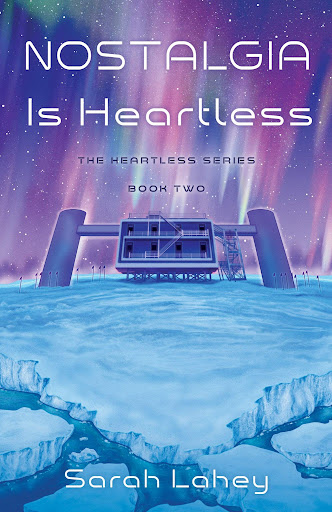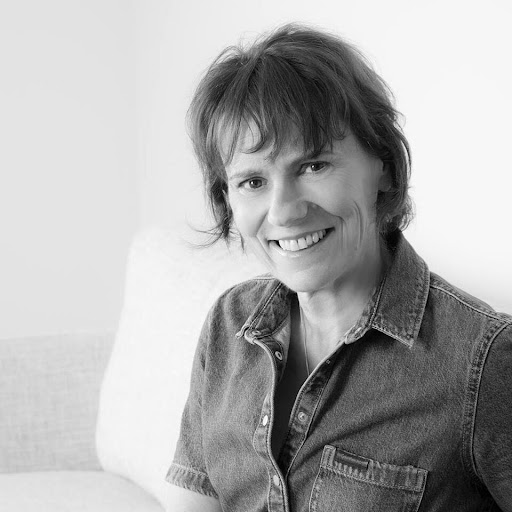 Sydney, Australia – Award-winning author Sarah Lahey returns to 2050 Earth with an optimistic second novel in The Heartless Series. Nostalgia is Heartless (She Writes Press, Oct. 26, 2021) continues Quinn Buyer’s journey as she navigates a desolate planet on the brink of destruction while juggling her pregnancy, her depressed meerkat, and her relationship with her partner.
Sydney, Australia – Award-winning author Sarah Lahey returns to 2050 Earth with an optimistic second novel in The Heartless Series. Nostalgia is Heartless (She Writes Press, Oct. 26, 2021) continues Quinn Buyer’s journey as she navigates a desolate planet on the brink of destruction while juggling her pregnancy, her depressed meerkat, and her relationship with her partner.
Earth, 2050. Pregnant, unemployed, and living back home with her father, climate scientist Quinn Buyers wonders how she got to this point in her life. Her famous scientist mother is mysteriously missing, the planet is at risk from a massive solar storm, the Transhumans want to take a colony to Titan, and her assisted living companion, a robotic meerkat, is showing clear signs of anxiety and depression. But her biggest challenge is her partner. How can she reconcile her long-distance relationship with this reserved, enigmatic cyborg?
The sequel to Sarah Lahey’s debut novel and the second book in the Heartless Series, Nostalgia is Heartless delves into the world of the near future, exploring a society on the brink of climate catastrophe. This time, Quinn’s adventures take her across the globe to Antarctica . . . where it rains all day, every day. Readers will delight in following Quinn’s journey as she races to save her family, her planet, and — hopefully — her love life.
Nostalgia is Heartless
Sarah Lahey | Oct. 26, 2021 | She Writes Press
Paperback | 9781647422097 | $16.95
Ebook | B08W2CKXZF | $9.95
Science fiction/climate fiction
 More about SARAH LAHEY
More about SARAH LAHEY
Sarah Lahey is a designer, educator, and writer. She holds bachelor’s degrees in interior design, communication, and visual culture, and works as a senior lecturer teaching classes on design, technology, sustainability and creative thinking. She has three children and lives on the Northern Beaches in Sydney, Australia. Find out more at https://www.sarahlahey.com/.
Follow Sarah on social media:
Twitter: @SarahKLahey
Instagram: @SarahKLahey
Advanced praise for ‘Nostalgia Is Heartless’
“This near-future story of a world ravaged by climate change will delight lovers of both romance and action sci-fi. Alternately funny and philosophical, this story paints a vivid, high-tech world while still packing an emotional punch… The quirky characters lend a whimsical feel to the story, and Lahey is clever and inventive in imagining new technology while still dealing with relatable problems.” Booklife Reviews
“In this gripping novel set in a near future beset by relentless climate emergencies, a principled scientist grapples with personal and scientific challenges.” Foreword Clarion Reviews
“A thrilling and immersive work of speculative climate fiction. The mix of humor, whimsy, and science makes for a climate change-centered adventure that manages to feel escapist and topical at the same time.” Kirkus Reviews
Awards and praise for ‘Gravity is Heartless’
2021 Independent Publishers Award – Gold Medal (Science Fiction 2021), International Book Awards – Finalist (Science Fiction 2020), American Book Fest Awards – Finalist (LGBTQ)
“Loved it. An adventure romp . . . set in a not too distant future and played for high stakes. It’s fun, witty and endlessly inventive . . . Bravo.” Peter FitzSimons, author of over 20 books, including, Kokoda, Gallipoli and Nancy Wake
“This is an impressive first novel by Sarah Lahey with its scope, literary qualities, and philosophical insight. I highly recommend Gravity Is Heartless.” Readers Favorite Review
“Lahey’s prose is lush—describing a deeply imaginative world—and on the whole, the story is thoroughly engrossing. An engaging adventure set in a deftly illustrated future.” Kirkus Reviews
“An inherently fascinating and fully entertaining read that showcases author Sarah Lahey’s impressive flair for originality and the kind of narrative storytelling style that keeps the reader’s attention fully focused from cover to cover.” Midwest Book Review
“Infused with wonder and the brilliance of the real world, Lahey excels in Quinn’s narration, breathing life into the dying world while giving Quinn a unique, knowledge-based personality.” Paperback Paris
In an interview, Sarah can discuss:
- Our relationship with technology and Artificial Intelligence (AI)
- The future of smart cities and smart buildings
- How to trust your crazy ideas and think creatively
- Balancing real world issues like climate change with fantastic ideas like time travel in her books
- Why it’s important to her to maintain a sense of optimism in science fiction
An Interview with Sarah Lahey
1. What inspired you to write a story featuring climate change?
I’ve been a designer for over 30 years, and a decade ago I started lecturing university students on sustainable design. I asked my students if they believed in climate change — less than half the class raised their hands. So, I thought, how am I going to teach this? Why don’t people believe in climate change; it’s a scientific fact?
So, I decided to write a novel set in the middle of a climate change catastrophe, where sea levels have risen, clouds have disappeared, and the planet is heating up. I thought if people read this, they might understand more fully what life would be like in a world affected by climate change.
2. Nostalgia is Heartless balances human aspects with more futuristic topics. How did you achieve this?
I think a key principle of science fiction writing is that the inhabitants of future worlds will be very similar to you and me. Some people will be anxious, some neurotic, and some will be perfectionists. The way different generations behave and move through the world is strikingly similar.
Humans might not change that much, but the world they inhabit will. Creating and describing this world takes a good imagination, a solid understanding of the past and the present—to be able to effectively describe the future—and lots of research, particularly in science, technology, medicine, and engineering, because these disciplines embody change.
3. What kind of research do you do for books featuring technology that’s still more or less in discovery phases?
My research coincided with my knowledge and love of architecture and the built environment, and this spilled over into the book. Most of the new technologies and world building ideas are based on real world scenarios. Many of the ideas are already in place, or not that far away, but not all of these will be adapted by mainstream culture.
4. Where do you draw inspiration?
Everything I do influences my writing. My ideas come from art, architecture, literature, film, music, and nature. Ideas are everywhere, the universe is filled with them. Everything, and everyone is interesting. But you must put yourself in a good place to find ideas, and then learn to trust yourself and your crazy ideas.
5. Your story isn’t strictly sci-fi and also includes a romantic element. What was your inspiration for Quinn’s relationship? How do you mesh these genres?
I don’t think you can have a story without love, whether that be romantic love, or something more pragmatic. It’s a fundamental life force that permeates everything we do. I like the idea of finding love, sex, romance when you least expect it, and that’s what I wanted for Quinn.

A former award-winning journalist with national exposure, Marissa now oversees the day-to-day operation of the Books Forward author branding and book marketing firm, along with our indie publishing support sister company Books Fluent.
Born and bred in Louisiana, currently living in New Orleans, she has lived and developed a strong base for our company and authors in Chicago and Nashville. Her journalism work has appeared in USA Today, National Geographic and other major publications. She is now interviewed by media on best practices for book marketing.
